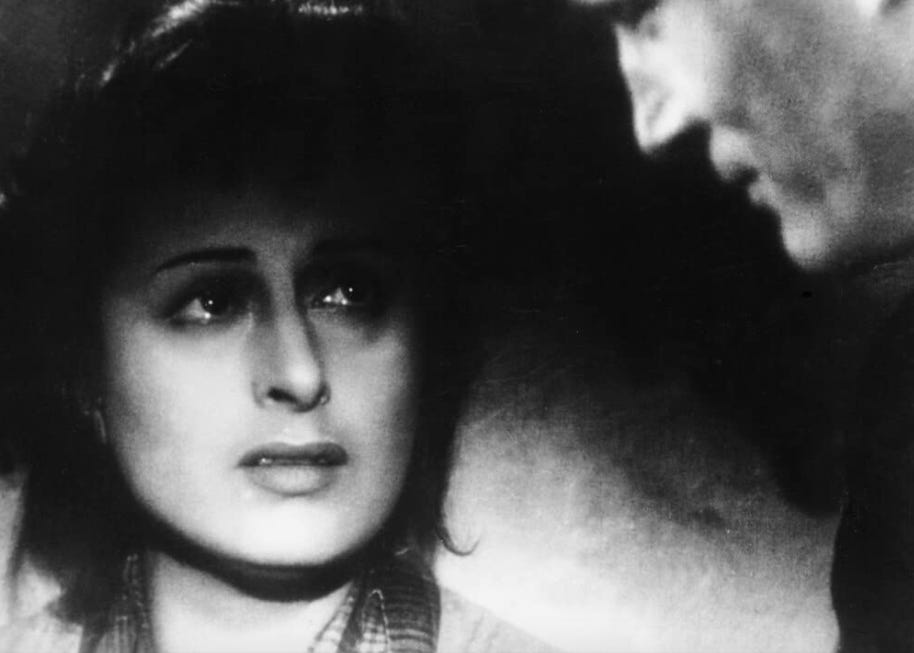#243 - “Rome, Open City” (1945) Roberto Rossellini
Anna Magnani, that incredible force of nature, plays Pina, a devout Catholic about to be married to Francesco, a resistance fighter during the Nazi occupation of Rome.
Filmed in the unmistakable neo-realist style that Rossellini turned into an exquisite art form, “Open City” looks enough like a documentary — the performances by non-professional actors, the frequently hand held, grainy camera work, the bombed out locations — to make us occasionally forget we’re watching a piece of scripted drama.
Rossellini’s intimate, non-manipulative, news-reel-style storytelling brings a bracing level of shocking truth to the images we see. And the brutality is a constant surprise: (Near the end of the film, when one character realizes the horrifying consequences of their selfishness, the moment of truth lands like a bullet to the heart. Grief, shame and regret have rarely been portrayed so hauntingly onscreen).
American war films of the period are made primarily as popcorn escapism, they are here to entertain us with their happy romances, clearly defined hero/villain schematics and easily digested arcs, which inevitably punish the bad guys.
“Open City” makes no such bargain with its audience, going so far as to kill major characters early on without warning, and to allow for hope-crushing betrayals that offer no chance for redemption.
War is not a fair game. And things don’t come right in the end. The Nazis are drawn as cruel, vicious thugs enjoying their moment of victory.
And Rossellini isn’t interested in showing us the inevitable comeuppance of the SS, he wants us to linger on the despair, so we can better recognize the valiance of the partisans and resistance fighters who were facing not only the Nazis from without, but the Italian fascists from within.
Here, as in “Paisan” from the following year — which I’ll be discussing next week — Rossellini brings to ecstatic life his characters’ struggle to retain their humanity while facing the inevitability of death.
The movie was shot in Rome a mere seven months after the Nazis had left. Cinecittà Studios had been damaged in the war and at the time of filming was being requisitioned by the Allied forces to house displaced persons.
Consequently, actual locations had to be used; places where death and misery had only recently occurred.
Seeing people pick through the ruins of Rome for food and supplies while enacting their scenes, brings a bruising legitimacy to the movie: It’s impossible not to visualize the real saints and monsters who stood in the same place a year earlier, performing the same actions, on the same locations, only for real.
The last five minutes are beautiful and horrible, full of emotional fervor and pitiless inevitability. And they are staged with a poetic lucidness that highlights Rossellini’s artful camera placement while never losing the urgency of the ‘you are there’ naturalness.
“Rome, Open City” is essential viewing: Bravery and sacrifice have never felt so audaciously realized.
STREAMING ON CRITERION CHANNEL






